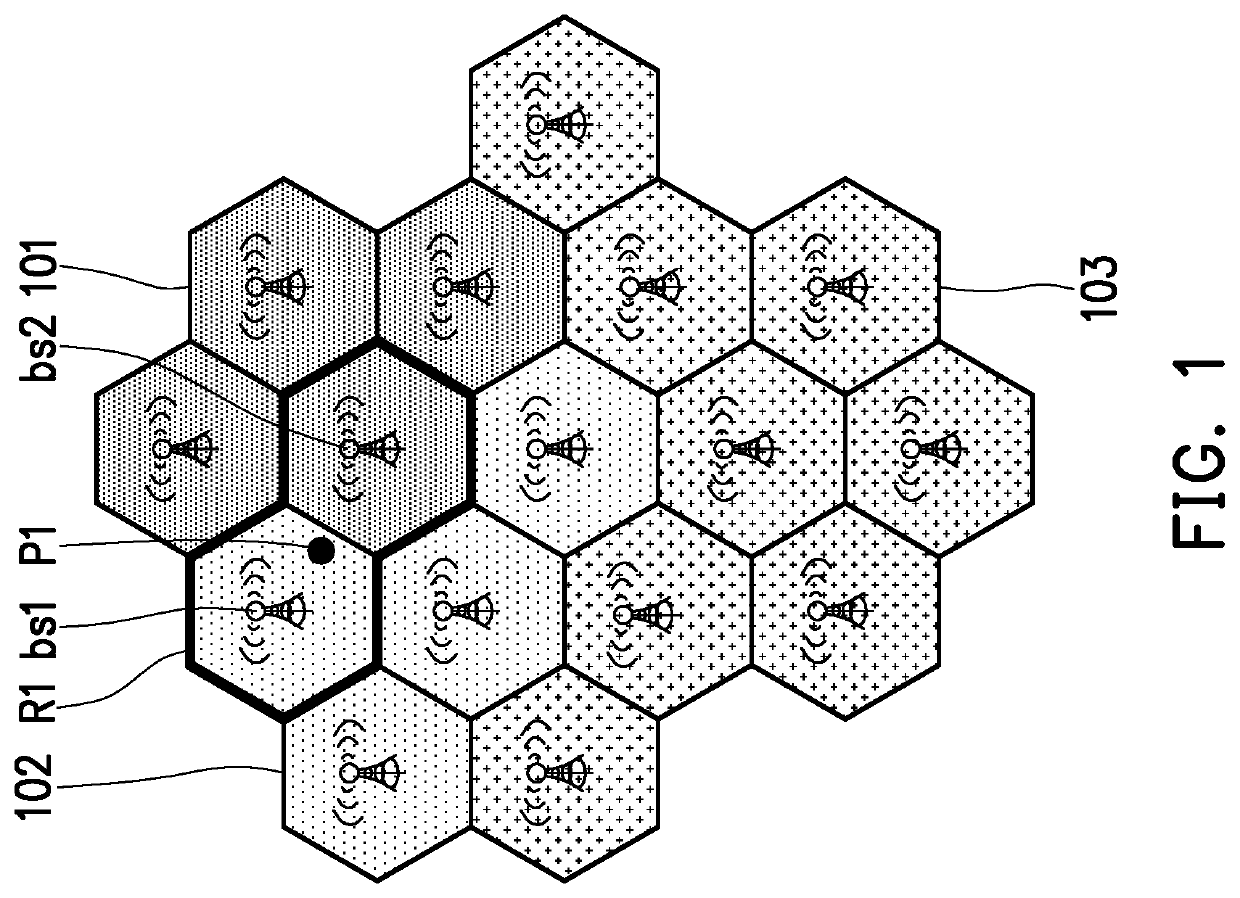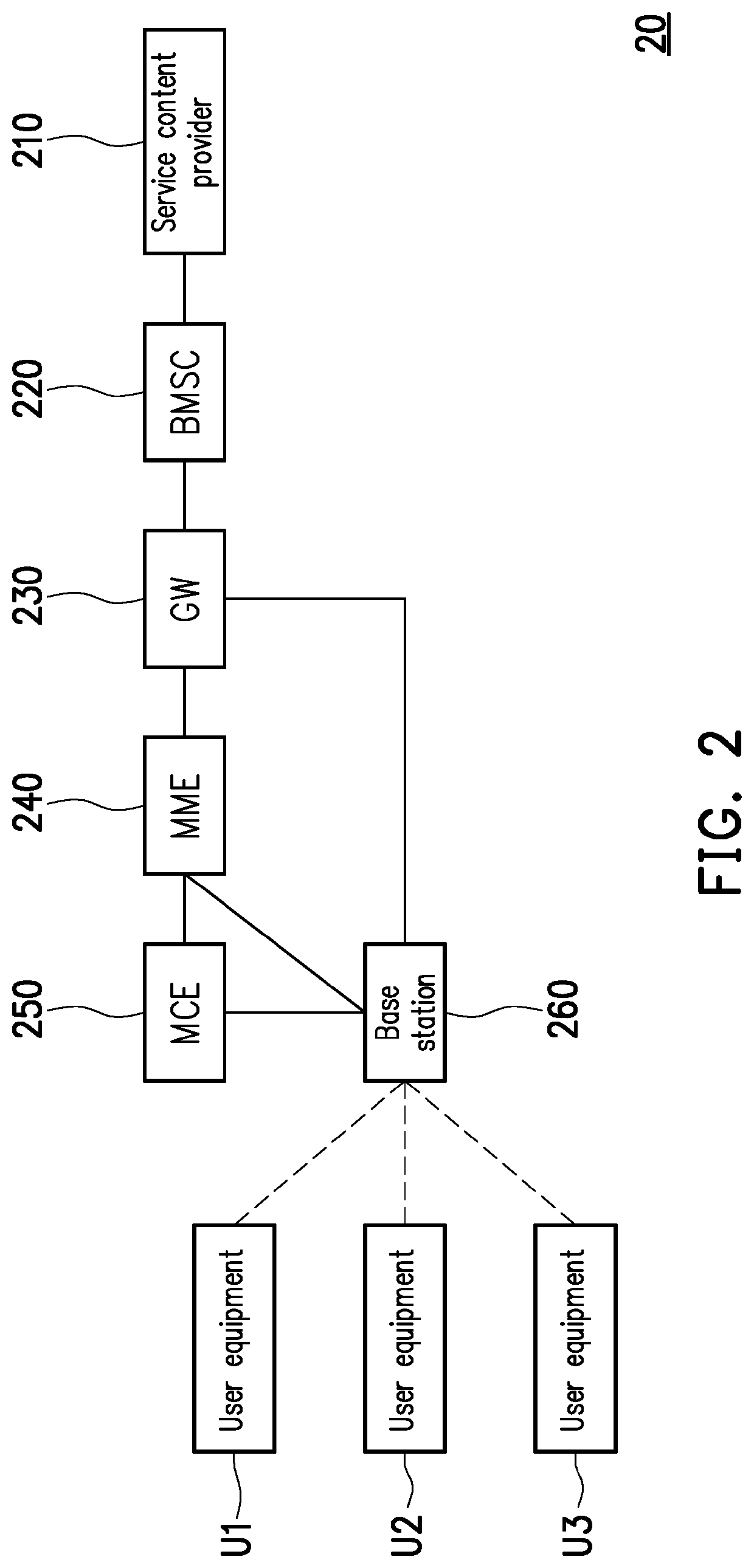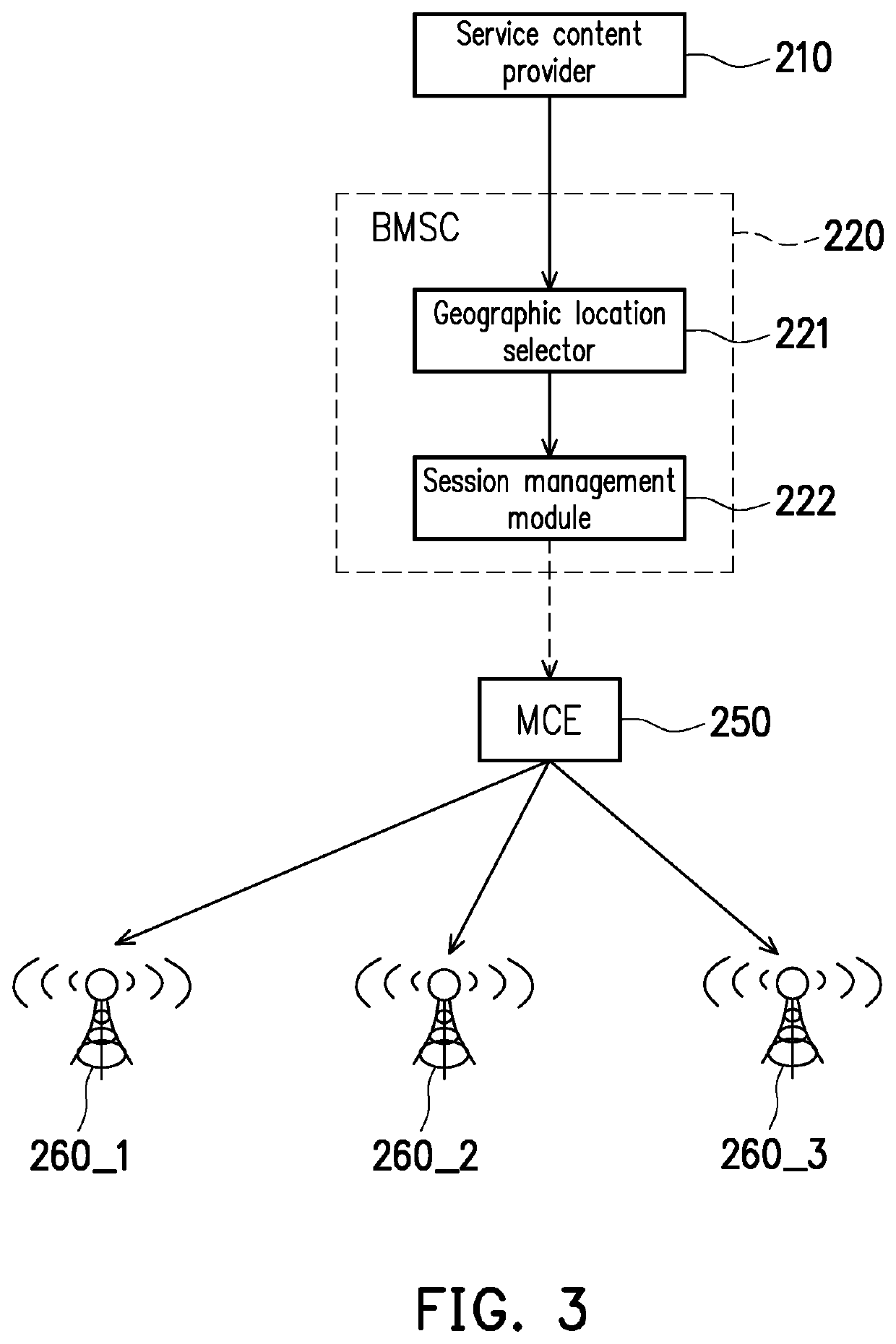Method for adjusting multicast broadcast service area and network apparatus using the same
- Summary
- Abstract
- Description
- Claims
- Application Information
AI Technical Summary
Benefits of technology
Problems solved by technology
Method used
Image
Examples
Embodiment Construction
[0024]To make the aforementioned and other features of the disclosure more comprehensible, exemplary embodiments accompanied with figures will be described in detail below. It is to be understood that both the foregoing general description and the following detailed description are exemplary, and are intended to provide further description of the disclosure as claimed.
[0025]In the disclosure, the terminology of the LTE standard specified by the Third Generation Partnership Project (3GPP) will be adopted for description of the exemplary embodiments. However, the same concept presented in the disclosure may be applied by those of ordinary skill in the art to any other communication system, e.g., a communication system using the 5G standard or other standards.
[0026]The network apparatus disclosed in the disclosure may be, for example, a multi-cell / multicast coordination entity (MCE) in a radio access network but is not limited thereto. The network apparatus is configured to manage spec...
PUM
 Login to View More
Login to View More Abstract
Description
Claims
Application Information
 Login to View More
Login to View More - R&D
- Intellectual Property
- Life Sciences
- Materials
- Tech Scout
- Unparalleled Data Quality
- Higher Quality Content
- 60% Fewer Hallucinations
Browse by: Latest US Patents, China's latest patents, Technical Efficacy Thesaurus, Application Domain, Technology Topic, Popular Technical Reports.
© 2025 PatSnap. All rights reserved.Legal|Privacy policy|Modern Slavery Act Transparency Statement|Sitemap|About US| Contact US: help@patsnap.com



